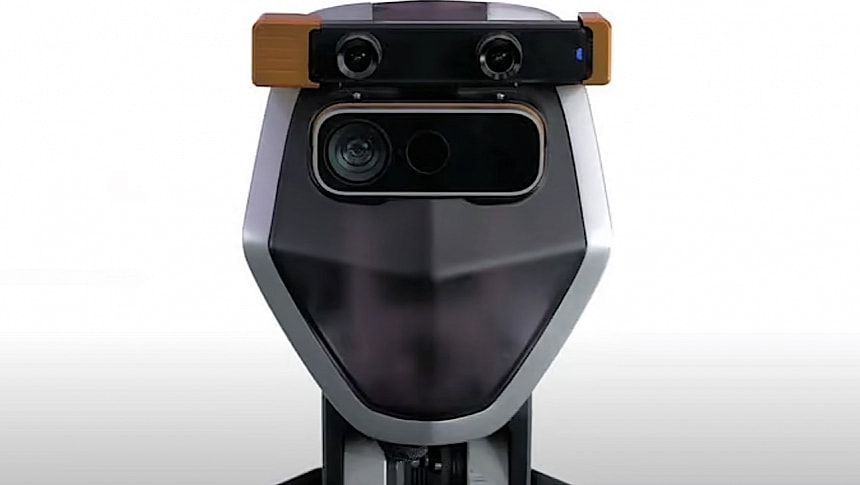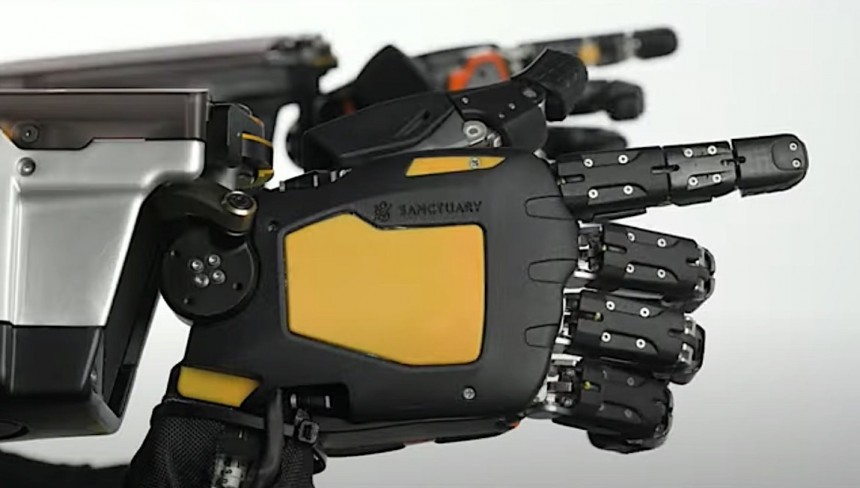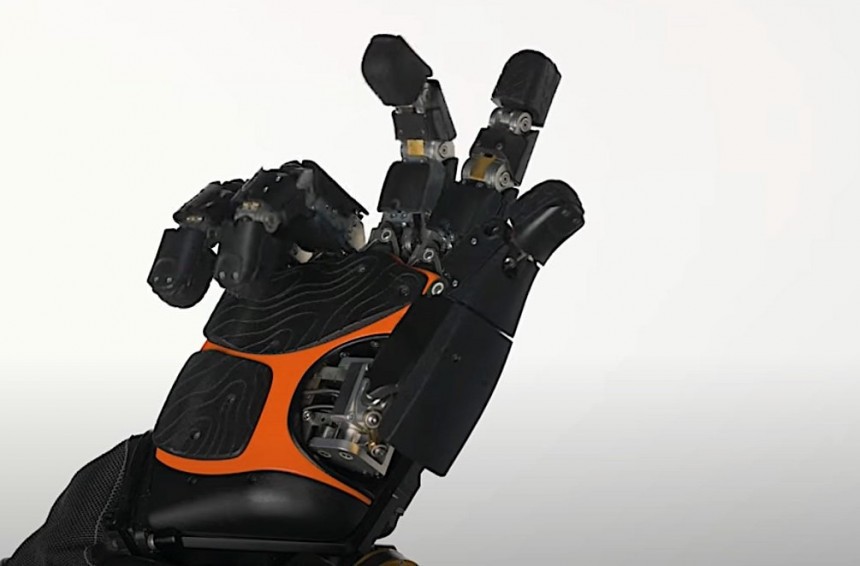Like it or not, robots of all shapes and sizes have been with us for decades now. They are meant to help us in factories, aid us in dangerous circumstances and environments, and overall make our lives easier. We like all these robots, and we’ve grown so accustomed to them we barely pay them any attention. But we will soon enough.
The robot kin is going through a major transformation: machines are beginning to get minds of their own. And that’s because more and more people and organizations are working to integrate artificial intelligence into these robots, giving them never-before-seen capabilities.
Most of the projects currently being run in this field involve the creation of special-purpose AI-powered machines, meaning tools designed to perform a specific task. But not the Phoenix robot, a machine that should be capable of thinking just like people, thus displaying the “world’s first human-like intelligence in general purpose robots.”
The idea to this this belongs to a company called Sanctuary Cognitive Systems Corporation (Sanctuary AI). It’s a Canadian startup created back in 2018 by a team of AI and technology pioneers who came together to “build a human-like brain and system that’s capable of executing human-like tasks.”
This crew didn’t wait around for stuff to happen, and immediately got to work creating not only a robot, but also the brain that’s meant to power it. Since its inception, the company has already released six generations of the Phoenix robot, and it has already scored some achievements.
Its fifth incarnation, for instance, already got a job in one of the facilities run by the Canadian Tire Corporation (CTC) in a bid to prove its abilities in a real-world setting. That happened at the start of 2023, and later the robot’s sixth variant was included by Time magazine on the list of last year’s best inventions.
But what is the Phoenix? Simply put, it’s a humanoid robot with legs, hands, and a head, about the size of an average human. It weighs 155 pounds (70 kg), stands five feet seven inches tall (170 cm), and displays “human-like full body mobility.”
The robot has been designed to move at speeds of up to three mph (five kph), and can carry payloads that weigh as much as 55 pounds (25 kg).
All of that is nice and all, but by no means truly impressive - after tall, we know of other robotic systems that are more capable than that. But what makes the Phoenix truly unique is its AI mind.
That AI mind is called Carbon, and it too is a product of Sanctuary AI. It was designed to mimic “subsystems found in the human brain.” In words, we can all understand, that means it comes with memory and the senses of sight, hearing, and touch.
The company says Carbon is capable of making the robot it powers capable of taking on pretty much all tasks humans routinely perform, including picking up glasses or other fragile objects.
The revised Carbon is installed in the seventh incarnation of the Phoenix, which was presented by Sanctuary at the end of last month. It represents the most advanced incarnation of the robot yet, drawing even closer to it being a person – those are the company’s words, not mine.
The seventh-gen robot comes with big improvements compared to before. It allows increased uptime, which should lead to more training and data capture capabilities, it has increased visual acuity and tactile sensing, and the time it needs to automate a new task has gone down from weeks to just 24 hours.
On a physical level, the new version of the robot is capable of a wider range of motions performed by its wrists, hands, and elbows. A number of hydraulic systems have also been miniaturized to help bring weight down a bit.
Sanctuary says the robot could be used in one of three ways. It could be remote-controlled by humans or in a pilot-assist fashion. The thing could also perform tasks on its own, supervised from afar by its operators.
The robot has not been designed to take over the world, but “to augment the human workforce and to make it safer.“ And that’s exactly what it will do, as more and more companies seem interested in the technology.
At the beginning of April, for instance, Sanctuary revealed it will deploy the Phoenic robot in the factories of European auto industry giant Magna. The group plans to integrate the robot within "automotive manufacturing processes,” but no specifics on what exactly that’s supposed to mean were provided.
Until we get to see the humanoid robot with a human-like mind doing stuff in the real world, you can have a look at some of its capabilities in the video below. You know, just to get a feeling of what lies ahead.
Most of the projects currently being run in this field involve the creation of special-purpose AI-powered machines, meaning tools designed to perform a specific task. But not the Phoenix robot, a machine that should be capable of thinking just like people, thus displaying the “world’s first human-like intelligence in general purpose robots.”
The idea to this this belongs to a company called Sanctuary Cognitive Systems Corporation (Sanctuary AI). It’s a Canadian startup created back in 2018 by a team of AI and technology pioneers who came together to “build a human-like brain and system that’s capable of executing human-like tasks.”
This crew didn’t wait around for stuff to happen, and immediately got to work creating not only a robot, but also the brain that’s meant to power it. Since its inception, the company has already released six generations of the Phoenix robot, and it has already scored some achievements.
Its fifth incarnation, for instance, already got a job in one of the facilities run by the Canadian Tire Corporation (CTC) in a bid to prove its abilities in a real-world setting. That happened at the start of 2023, and later the robot’s sixth variant was included by Time magazine on the list of last year’s best inventions.
The robot has been designed to move at speeds of up to three mph (five kph), and can carry payloads that weigh as much as 55 pounds (25 kg).
All of that is nice and all, but by no means truly impressive - after tall, we know of other robotic systems that are more capable than that. But what makes the Phoenix truly unique is its AI mind.
That AI mind is called Carbon, and it too is a product of Sanctuary AI. It was designed to mimic “subsystems found in the human brain.” In words, we can all understand, that means it comes with memory and the senses of sight, hearing, and touch.
The company says Carbon is capable of making the robot it powers capable of taking on pretty much all tasks humans routinely perform, including picking up glasses or other fragile objects.
The revised Carbon is installed in the seventh incarnation of the Phoenix, which was presented by Sanctuary at the end of last month. It represents the most advanced incarnation of the robot yet, drawing even closer to it being a person – those are the company’s words, not mine.
On a physical level, the new version of the robot is capable of a wider range of motions performed by its wrists, hands, and elbows. A number of hydraulic systems have also been miniaturized to help bring weight down a bit.
Sanctuary says the robot could be used in one of three ways. It could be remote-controlled by humans or in a pilot-assist fashion. The thing could also perform tasks on its own, supervised from afar by its operators.
The robot has not been designed to take over the world, but “to augment the human workforce and to make it safer.“ And that’s exactly what it will do, as more and more companies seem interested in the technology.
At the beginning of April, for instance, Sanctuary revealed it will deploy the Phoenic robot in the factories of European auto industry giant Magna. The group plans to integrate the robot within "automotive manufacturing processes,” but no specifics on what exactly that’s supposed to mean were provided.
Until we get to see the humanoid robot with a human-like mind doing stuff in the real world, you can have a look at some of its capabilities in the video below. You know, just to get a feeling of what lies ahead.














